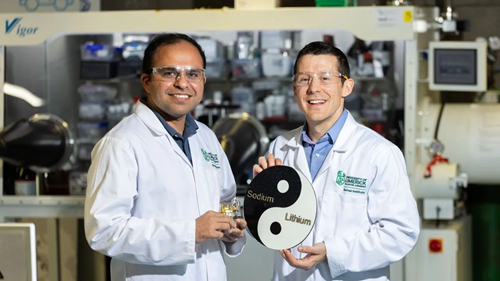In a groundbreaking breakthrough for the future of energy storage, a team of international researchers has developed the world’s first full-cell dual-cation battery, a new type of rechargeable power source that promises higher energy density, faster charging, and longer lifespan than today’s lithium-ion batteries.
Created through a collaboration among leading universities and global research institutes, the dual-cation battery introduces an innovative design that uses two types of metal ions—instead of one—to carry electrical charge. This dual-ion movement allows for greater energy storage capacity while ensuring enhanced safety and stability.
Unlike conventional lithium-ion batteries that depend solely on lithium ions, the dual-cation system combines lithium with another ion, such as sodium or magnesium, improving ionic conductivity and reducing long-term material degradation. The result is a more efficient, safer, and environmentally friendly energy storage solution suitable for electric vehicles, consumer electronics, and renewable power grids.
Dr. Mei Lin, head of the Energy Materials Laboratory at the University of Singapore, called the discovery “a leap forward in electrochemical science.” She noted, “By demonstrating a fully functional dual-cation full-cell, we’ve transitioned from theory to practical application. This innovation could reshape how we design batteries for the next decade.”
Laboratory tests have shown that the prototype achieved record-breaking energy density while maintaining remarkable cycle stability across hundreds of charge and discharge sessions. Experts estimate that commercial applications of this technology could emerge within five years, once large-scale production and cost efficiency are optimized.
The dual-cation approach also offers a path to sustainability by reducing dependency on lithium—a resource facing global supply constraints—through partial substitution with more abundant and eco-friendly metals.
This breakthrough represents a major milestone in clean energy research, bringing the world closer to high-performance, sustainable, and scalable energy storage solutions that could power the next generation of electric mobility and renewable systems.







